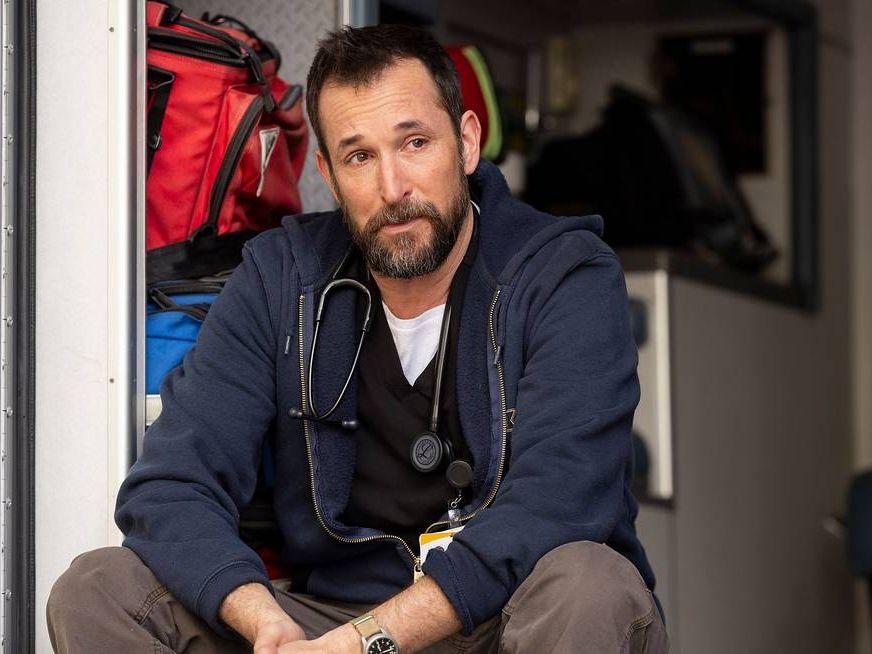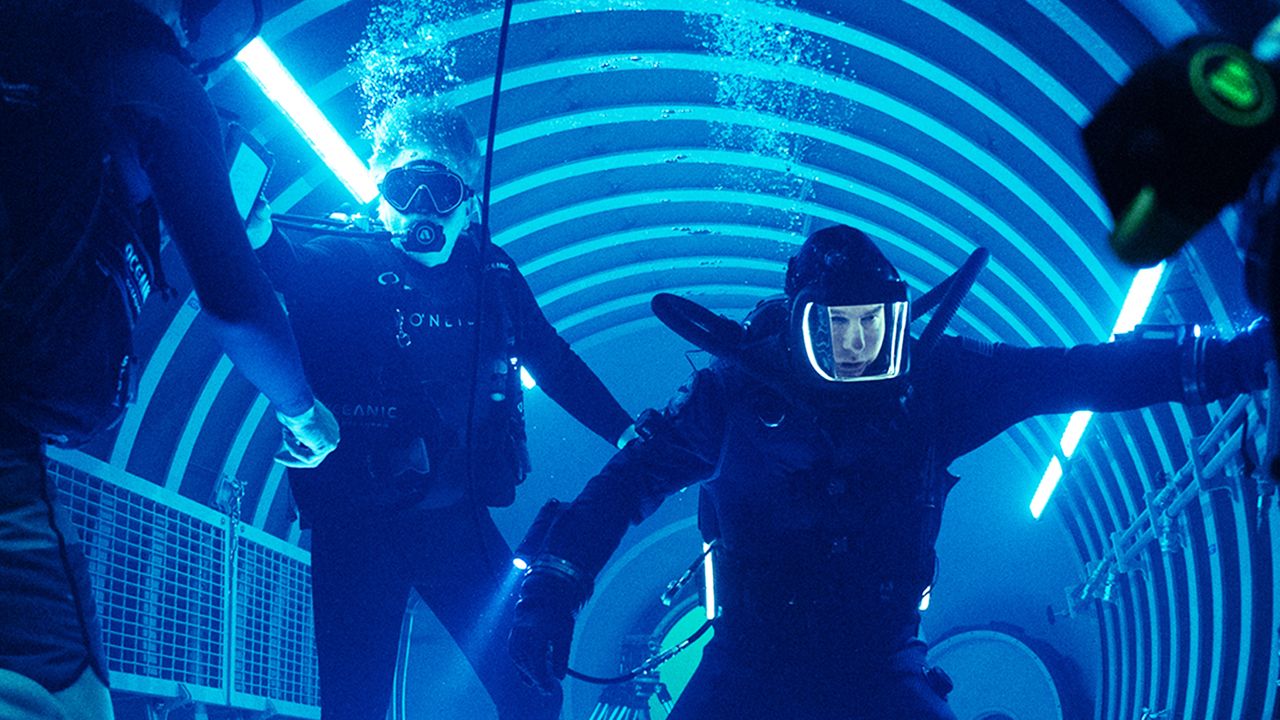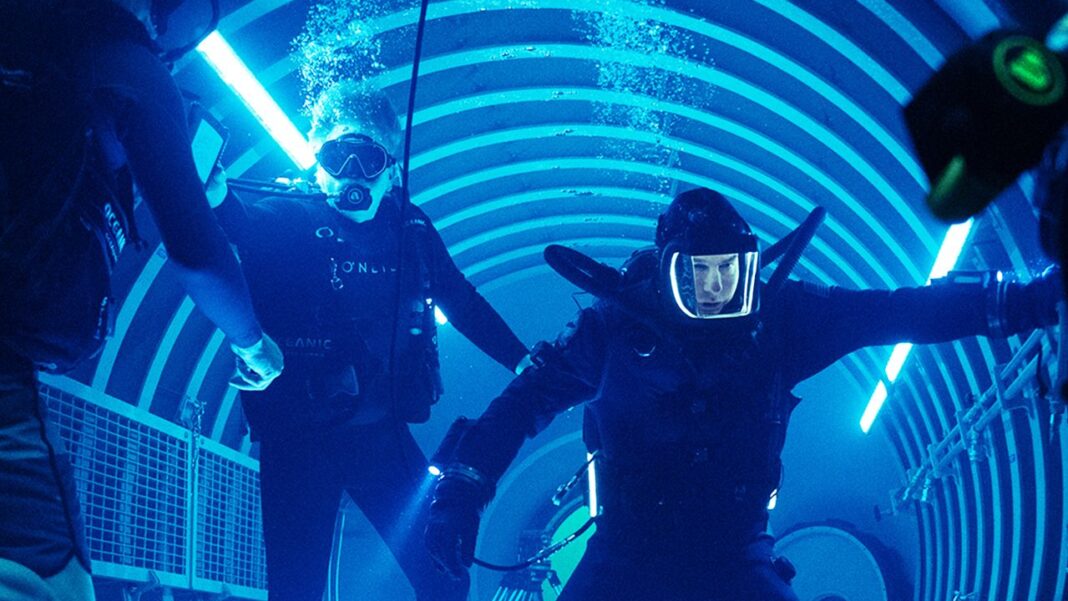Forget your typical summer blockbuster. Forget explosions for the sake of explosions. The Mission: Impossible franchise stands apart, a dizzying spectacle of intricately choreographed stunts, improbable escapes, and a lead actor who seems to defy the laws of physics. How does Tom Cruise and his team manage to pull this off? That’s the question that sets us on a path to explore the relentless pursuit of pushing cinematic boundaries, the demands of perfectionism, and the sheer audacity that defines Mission: Impossible as the most insane action franchise on the planet.
Mission: Impossible – The Price of Thrills
Tom Cruise’s Relentless Pursuit of Danger

The Mission: Impossible franchise has become synonymous with death-defying stunts, pushing the boundaries of cinematic action to new heights. From scaling the Burj Khalifa to dangling precariously from the side of a moving train, Tom Cruise has cemented his reputation as one of the most dedicated and daring actors in Hollywood. This relentless pursuit of danger, however, comes at a significant cost – both physically and financially.
The history of stunts in the franchise is a testament to Cruise’s commitment to authenticity. Early installments relied on practical effects and impressive feats of athleticism, setting the stage for the increasingly elaborate and risky sequences that define the series today.
Cruise’s dedication to performing his own stunts has become a defining characteristic of the franchise. He undergoes rigorous training, pushing his physical limits to the extreme. While this approach has resulted in breathtaking and unforgettable action sequences, it also exposes him to inherent risks. Cruise has suffered numerous injuries throughout the course of filming, highlighting the inherent danger involved in his demanding profession.
The impact of Cruise’s dedication on the franchise’s identity is undeniable. The emphasis on practical effects and real-life stunts has contributed to the series’ unique and visceral appeal. Audiences are drawn to the raw energy and authenticity of Cruise’s performances, which elevate the action sequences beyond mere spectacle.

Behind the Scenes: A Look at the Making of Madness
The sheer scale and complexity of the stunts in Mission: Impossible demand meticulous planning and execution. Each sequence is a testament to the collaborative efforts of a highly skilled team of stunt coordinators, filmmakers, and technicians.
The Biplane Sequence in South Africa: A Case Study in High-Stakes Filmmaking
The breathtaking biplane sequence in Mission: Impossible – Fallout, filmed against the backdrop of the South African landscape, exemplifies the meticulous planning and execution involved in creating these high-stakes action scenes. The decision to shoot in South Africa, just after the rainy season, was strategic. The post-rain landscape offered a vibrant, verdant backdrop, but it also presented unique challenges.
“If the temperature changes two degrees Celsius, Tom will be hypothermic after 12 minutes on the wing,” McQuarrie said.
Cruise had no radio in his ear, so he and McQuarrie, who shot the sequence from a helicopter hovering so close to the plane that he could read Cruise’s airspeed in the cockpit, devised a set of hand signals for communication.
“The wind is hitting him not only at the speed that the plane is flying but the wind coming off the propeller. It’s hitting him at well over a hundred-plus miles an hour,” McQuarrie said. At that speed, air is actually hard to breathe. “There were times when Tom would have to lay down on the wing to rest between takes,” McQuarrie said. “You can’t tell if he’s conscious or not. And unless Tom pats the top of his head”—their hand signal for stop —“it’s like, keep rolling.”
Cruise’s plane was also flying frighteningly low, McQuarrie said. “A plane flying at altitude, safely, is the most boring thing imaginable. You watch Top Gun: Maverick, the reason why we’re flying in that canyon, the reason why Star Wars flies in that canyon—planes are only cool when they’re flying low. No matter how fast they’re flying. Now in Top Gun, they were flying, at times, 50, 60 feet off the deck. When you’re in a biplane that can’t go Mach 2, you’ve got to go lower. The margin of error is zero. The power on these planes, they’re at full throttle, which means if there’s a downdraft or a thermal, there is no more oomph to get up. You go down and that’s it. I’m directly behind it. He goes down, I go down. Our crew goes down.” In this way, over the years, McQuarrie has become kind of a stuntman too. Where Cruise goes, McQuarrie goes. Even in midair. “There is not enough room in this article for me to fully communicate and give justice to all of the things that Christopher McQuarrie is, does, and has done,” Cruise told me. Despite the danger, McQuarrie seems to love the chaos of the life he’s fallen into. The bad luck, the broken bones, the close calls. “It’s weird how the content of these things mirrors the making of them,” Jendresen, the screenwriter, told me. McQuarrie encouraged me to rewatch the last scene of Mission: Impossible—Fallout, which they’d shot on film. Cruise’s Ethan Hunt, after his helicopter ordeal, awakens to find all his friends around his hospital bed. His whole body is in pain. “Don’t make me laugh,” he says, and then there is a flash of light, and the screen goes dark. Cue the Mission theme. But that flash was not planned, McQuarrie told me. What you’re seeing is the most basic accident you can see on a film set. “There is nothing more Mission,” McQuarrie said, grinning, “than the camera rolling out of film on the last shot.”
Christopher McQuarrie: Director, Stuntman, and Cruise’s Shadow
Christopher McQuarrie, the director of the last four installments of Mission: Impossible, has become an integral part of the franchise’s success. McQuarrie’s directorial vision has pushed the boundaries of action cinema, creating some of the most visually stunning and adrenaline-pumping sequences in recent memory.
McQuarrie’s relationship with Cruise extends beyond the director-actor dynamic. He often participates in the stunts alongside Cruise, pushing himself to the limit to create a sense of authenticity and shared risk. This shared commitment to pushing boundaries has forged a unique bond between the two, contributing to the franchise’s signature intensity.
The Human Element: The Toll of Pushing Physical Limits
While the stunts in Mission: Impossible are undoubtedly awe-inspiring, it is crucial to acknowledge the human toll involved in their creation. The actors, stunt performers, and crew members who contribute to these sequences undergo rigorous training and face inherent risks.
Injuries are an unfortunate reality in this line of work. Cruise himself has suffered numerous injuries throughout the filming of the franchise. These physical demands highlight the immense dedication and sacrifice required to bring these action sequences to life.
The Art of the Accident: Improvisation and Authenticity
In the high-stakes world of action filmmaking, the line between scripted and improvisational moments is often blurred. For the Mission: Impossible franchise, this blend of planned and unplanned elements has become a hallmark of its success.
The Importance of Unplanned Moments in Cinematic Storytelling
According to Christopher McQuarrie, director of Mission: Impossible – Fallout, the unplanned moments on set often lead to the most memorable scenes. “The flash of light at the end of the film was not planned,” he reveals. “It’s the most basic accident you can see on a film set, but it’s exactly what makes it feel real.”
McQuarrie’s approach to filmmaking is centered around creating an atmosphere of authenticity on set. By embracing the unpredictability of real-world situations, he encourages his actors to stay in character and respond truthfully to the circumstances unfolding around them.
This approach is evident in the infamous biplane sequence from Mission: Impossible – Fallout. Shot in South Africa, the sequence features Tom Cruise performing a series of death-defying stunts while piloting a vintage biplane. With no radio in his ear, Cruise relies on hand signals from McQuarrie to communicate. The sequence is a testament to the duo’s ability to push the boundaries of what is possible in action filmmaking.
The “Mission: Impossible” Ripple Effect: How Accidents Shape the Franchise
Over the years, the Mission: Impossible franchise has built a reputation for its high-risk stunts and dramatic action sequences. While some might view these moments as reckless or irresponsible, McQuarrie sees them as an essential part of the film’s appeal.
“The content of these things mirrors the making of them,” notes screenwriter John Jendresen. “When you’re making a film like Mission: Impossible, you’re creating a world that’s full of tension and danger. Sometimes, that tension and danger spill over into the real world.”
This “ripple effect” has become a defining characteristic of the Mission: Impossible franchise. By embracing the unpredictability of real-world situations, the filmmakers have created a sense of authenticity that sets their films apart from more formulaic action movies.
The Ethical Considerations: Balancing Risk with Safety
While the Mission: Impossible franchise is known for its high-risk stunts, the safety of the cast and crew is always the top priority. McQuarrie and his team work closely with stunt experts and safety specialists to ensure that every stunt is carefully planned and executed.
“We’re not just talking about the actors; we’re talking about the entire crew,” notes McQuarrie. “When you’re doing a stunt like the biplane sequence, you’re not just putting one person at risk – you’re putting the entire crew at risk.”
The balance between risk and safety is a delicate one. While the filmmakers strive to create an atmosphere of authenticity on set, they must always prioritize the safety of everyone involved. This requires a deep understanding of the risks involved and a willingness to adapt and adjust the stunts as needed.
Beyond the Explosions: The Power of Storytelling
At its core, the Mission: Impossible franchise is a story-driven series that just happens to feature a lot of explosions. While the action sequences are certainly a key part of the franchise’s appeal, they’re not the only thing that keeps audiences coming back for more.
The Evolution of Ethan Hunt: From Action Hero to Complex Character
Over the years, Ethan Hunt has evolved from a one-dimensional action hero to a complex and nuanced character. Played by Tom Cruise, Ethan is a charismatic and resourceful operative who will stop at nothing to complete his missions.
But beyond his impressive physical abilities, Ethan is also a deeply human character. He’s driven by a sense of loyalty and duty, and he’s willing to put himself in harm’s way to protect those he cares about.
This complexity is a key part of the franchise’s enduring appeal. By making Ethan a fully realized character, the filmmakers have created a sense of emotional investment that goes beyond the action sequences.
The Franchise’s Enduring Appeal: The Human Connection Amidst the Chaos
So what is it about the Mission: Impossible franchise that continues to captivate audiences? According to screenwriter John Jendresen, it’s the human connection that the films provide.
“People are drawn to the Mission: Impossible franchise because it’s a story about people,” notes Jendresen. “It’s not just about the action sequences or the stunts – it’s about the relationships between the characters and the emotional connections they make.”
This human connection is a key part of the franchise’s enduring appeal. By making the characters relatable and emotionally resonant, the filmmakers have created a sense of investment that goes beyond the action sequences.
Looking Ahead: What’s Next for Mission: Impossible?
As the franchise continues to evolve, it’s clear that the Mission: Impossible team is committed to pushing the boundaries of what’s possible in action filmmaking. With a new film on the horizon, fans can expect even more high-stakes action and heart-pumping suspense.
But beyond the explosions and stunts, the Mission: Impossible franchise remains a story-driven series that’s all about the human connections between the characters. By continuing to evolve and adapt, the filmmakers have ensured that the franchise will remain relevant and exciting for years to come.
Conclusion
In conclusion, the making of Mission: Impossible is a testament to the power of cinematic innovation, driven by the unwavering vision of Tom Cruise and Christopher McQuarrie. Through a deep dive into the franchise’s most death-defying stunts, we’ve seen how a willingness to push boundaries has redefined the action genre. From the Burj Khalifa to the HALO jump, each sequence has raised the bar, reinvigorating the franchise and cementing its status as a cultural touchstone.
The implications of this approach extends far beyond the realm of entertainment. In an era of franchise fatigue, Mission: Impossible’s commitment to practicality and innovation serves as a beacon of inspiration for filmmakers and audiences alike. As the industry continues to evolve, the franchise’s influence will be felt in the years to come, driving the development of new technologies and storytelling techniques. As we look to the future of action cinema, one thing is clear: the Mission: Impossible franchise will remain at the forefront, perpetually redefining what’s possible on screen.
As we reflect on the sheer audacity of this franchise, one inescapable truth emerges: the true magic of Mission: Impossible lies not in its stunts, but in its ability to inspire us to reimagine the impossible. In a world where the boundaries of human achievement are constantly being pushed, Mission: Impossible reminds us that, with unyielding determination and creativity, we can achieve the unthinkable. And that, perhaps, is the most impossible feat of all.
